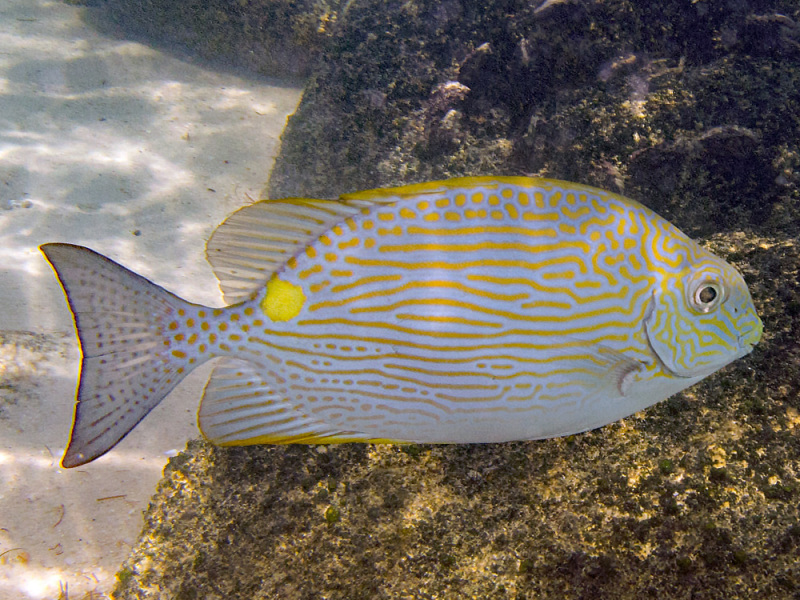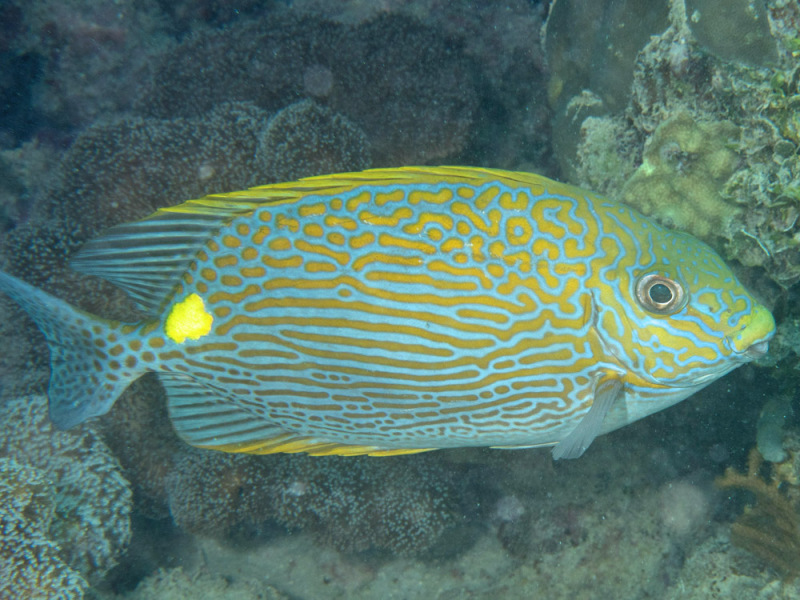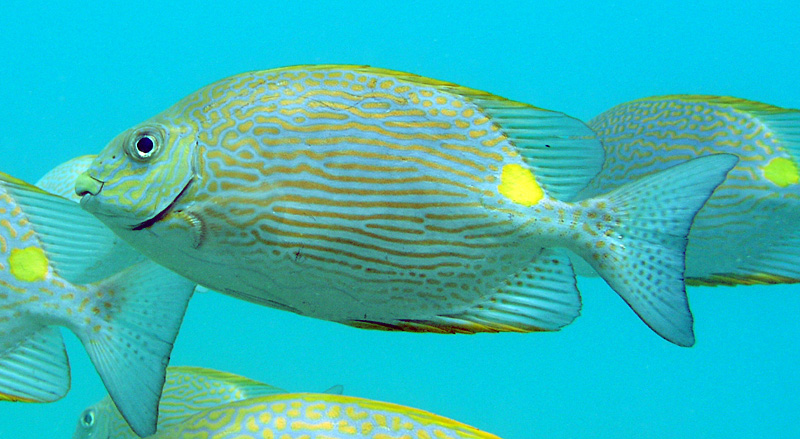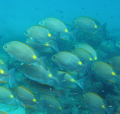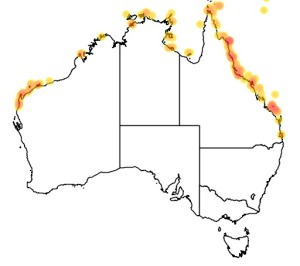Colours
Distinguishing features
A medium sized grey fish with broken horizontal brown lines and dots on the body, and a conspicuous yellow spot in front of the tail base.
Size
- Up to 43 cm (Standard length)
Depth range
- Depth range data is not yet available.
Synonyms
Distribution
Distribution and habitat preferences
Shallow reef flat areas near good coral cover in lagoons and other sheltered backreef habitats.
Can be found in most locations around the island but prefers sheltered sites.
Behaviour
The Goldlined Rabbitfish is usually seen resting quietly in the daytime in small schools, and the lack of feeding observations suggests this species is a crepuscular or even nocturnal feeder on turf algae, seagrass and macroalgae. This species spawns in groups during the warmer months, when fast running tidal currents coincide with dawn and dusk. They are mature at about 2 years of age, and the spawning takes place at a regular lunar phase, usually around the first quarter moon. There is little published information on the demography or ecology of the Siganidae, but they are likely to be long-lived fishes. Juveniles look similar to the adults, but are relatively uncommon.
Web resources
Danger
- unspecified - The dorsal and ventral fin spines are poisonous, so care should be taken if handling this fish.
References
- Borsa, P., S. Lemer and D. Aurelle (2007). Patterns of lineage diversification in rabbitfishes, Molecular Phylogenetics and Evolution, 44: 427-435. LIRS catalog number 90138.
- Brandl, S.J. and D.R. Bellwood (2013). Morphology, sociality, and ecology: can morphology predict pairing behavior in coral reef fishes? Coral Reefs, 32: 835-836. LIRS catalog number 1718.
- Bray, R.A. and T.H. Cribb (2000). The status of the genera Hysterolecithoides Yamaguti, 1934, Neotheletrum Gibson and Bray, 1979 and Machidatrema Leo'n-Re`gagnon, 1998 (Digenea: Hemiuroidea), including a description of M. leonae n.sp. from Australian waters, Systematic Parasitology, 46: 1-22. LIRS catalog number 608.
- View all references
